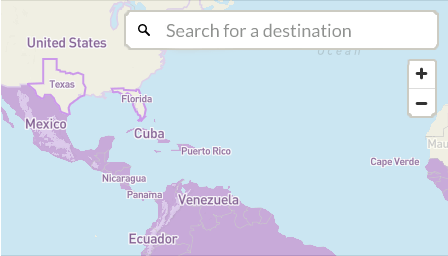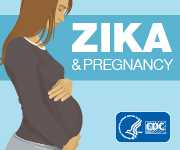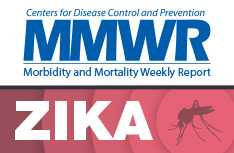Blood & Tissue Safety: Geographic Areas with Zika Virus Transmission Risk
Zika virus information for blood collection and tissue recovery organizations
CDC is working with state health departments and blood and tissue recovery organizations to help ensure the safety of our blood and tissue supply and reduce the risk of Zika virus transmission through blood transfusion and tissue transplants. Zika virus disease is a nationally notifiable condition. Cases are reported to CDC by state and local health departments using standard case definitions.
Areas with Zika Virus Transmission Risk in the Continental United States
To protect the domestic blood and tissue supply, CDC, in collaboration with the US Food and Drug Administration (FDA), has defined areas of Zika virus transmission risk. These defined areas of risk can be different from areas for which CDC has issued travel guidance. For the purposes of blood and tissue safety interventions, areas of Zika virus transmission risk will be identified at the county-level.
Previously listed areas of active Zika virus transmission risk in the continental United States for the purposes of blood and tissue safety intervention:
- Cameron County, Texas – From December 9, 2016 – August 29, 2017
- Miami-Dade County, Florida – From July 29, 2016 – June 2, 2017
- Palm Beach County, Florida – From August 24, 2016 – November 2, 2016
Areas with Zika Virus Transmission Risk Outside of the Continental United States
Based on laboratory analyses and mathematical modeling, a conservative yet plausible estimate for introduction of Zika virus and substantive risk of exposure in North America, South America, Central America, and the Caribbean is January 1, 2014 (1,2,3). Furthermore, scientific evidence confirms Zika virus presence in some African and Asian countries for decades, in some cases dating back to the 1950’s (4,5,6).
FDA: 2017 Safety and Availability Communications
Please refer to the world map at this link for areas where there is Zika virus transmission risk:

Please refer to the list of areas at this link where Zika virus transmission was previously reported, but that are now classified as having interrupted transmission:
Potential Increased Risk to Blood and Tissue Safety – June 15, 2016 – June 2, 2017
CDC identified the potential for increased risk to blood and tissue safety in Miami-Dade County starting on June 15, 2016. The potential risk in Miami-Dade County did not meet the threshold for designation as an area of active transmission until July 29, 2016. CDC also identified the potential for increased risk to blood and tissue safety in Broward and Palm Beach counties starting on June 15, 2016 because of local travel of residents of these counties to areas of active transmission in Florida.
Guidance for Healthcare Providers Caring for Pregnant Women
References
- Lednicky J, Beau De Rochars VM, El Badry M, et al. Zika Virus Outbreak in Haiti in 2014: Molecular and Clinical Data. Reithinger R, ed. PLoS Neglected Tropical Diseases. 2016;10(4):e0004687. doi:10.1371/journal.pntd.0004687.
- Faria NR, Quick J, Claro IM, Theze J, de Jesus JG, Giovanetti M, Kraemer MUG., Hill SC, Black A, da Costa AC, Franco LC, Silva SP, Wu CH, Raghwani J, Cauchemez S, du Plessis L, Verotti MP, de Oliverira WK, Carmo EH, Coelho GE, Santelli ACFS, Vinhal LC, Henriques CM, Simpson JT, Loose M, et al. Establishment and cryptic transmission of Zika virus in Brazil and the Americas. Nature. 2017; 546: 406-410. Doi:10.1038/nature22401.
- Metsky HC, Matranga CB, Wohl S, Schaffner SF, Freije CA, Winnicki SM, Qu J, Baniecki ML, GladdenYoung A, Lin AE, Tomkins-Tinch Ch, Ye SH, Park DJ, Luo CY, Barnes KG, Shah RS, Chak B, Barbosa-Lima G, Delatorre E, Vierira YR, Paul LM, Tan AL, Barcellona CM, Porcelli MC, et al. Zika virus evolution and spread in the Americas. Nature.2017;546:411-415. Doi:10.1038/nature22402.
- Dick GW, Kitchen SF, Haddow AJ. Zika virus. I. Isolations and serological specificity. Trans R Soc Trop Med Hyg. 1952 Sep;46(5):509–20. doi: http:// dx.doi.org/10.1016/0035-9203(52)90042-4 PMID: 12995440
- Marchette NJ, Garcia R, Rudnick A. Isolation of Zika virus from Aedes aegypti mosquitoes in Malaysia. The American journal of tropical medicine and hygiene. 1969;18:411–415.
- Duffy MR, Chen TH, Hancock WT, Powers AM, Kool JL, Lanciotti RS, Pretrick M, Marfel M, Holzbauer S, Dubray C, Guillaumot L, Griggs A, Bel M, Lambert AJ, Laven J, Kosoy O, Panella A, Biggerstaff BJ, Fischer M, Hayes EB. Zika virus outbreak on Yap Island, Federated States of Micronesia. N Engl J Med. 2009 Jun 11;360(24):2536-43. doi: 10.1056/NEJMoa0805715. PubMed PMID: 19516034.
- Page last reviewed: September 28, 2017
- Page last updated: September 28, 2017
- Content source:





 ShareCompartir
ShareCompartir